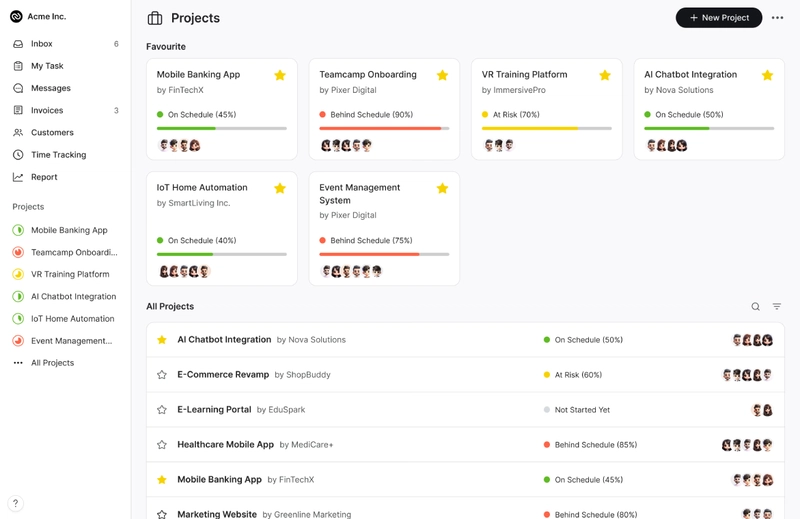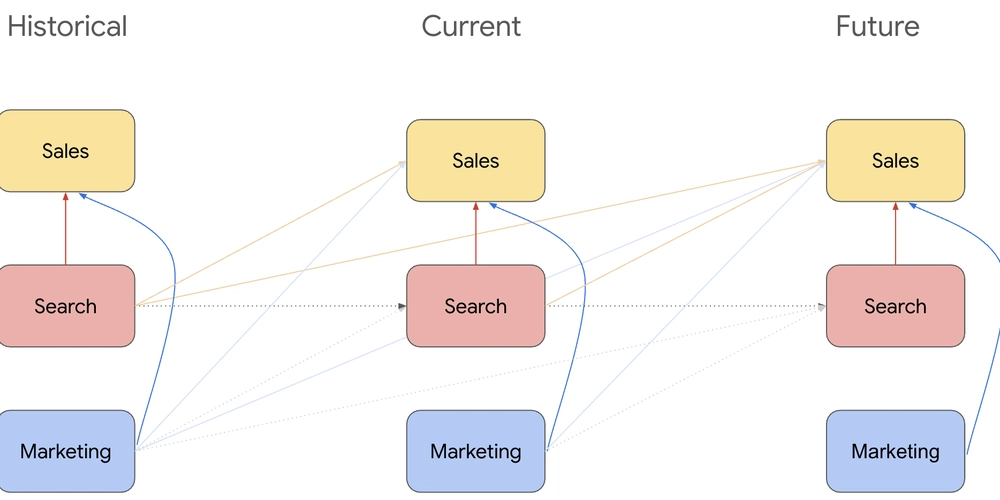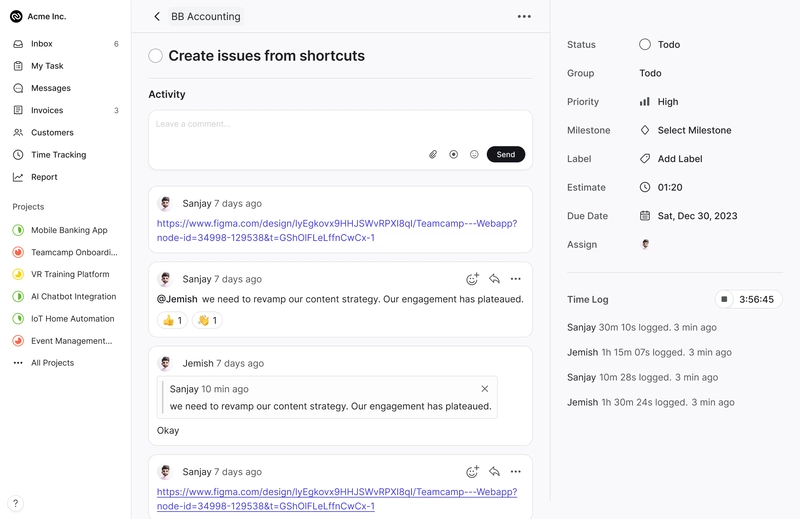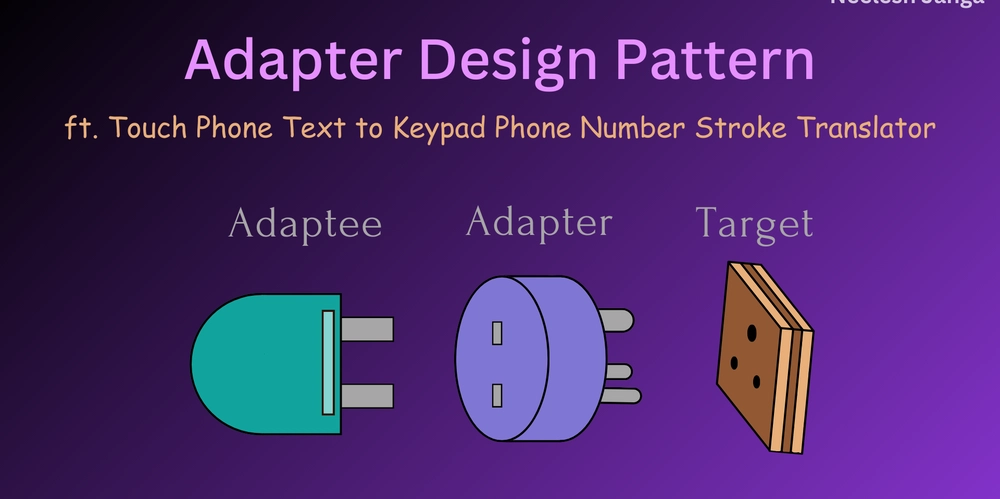10 Project Management Mistakes That Drive Developers Crazy
Introduction Developers love coding, solving problems, and building great products—but project management? Not so much. While good project management can boost productivity, bad project management can slow dev teams down, create unnecessary stress, and lead to frustration. The good news? These project management mistakes are avoidable with the right approach and the right tools. Teamcamp, an all-in-one project management platform, helps development teams overcome these issues and work more efficiently. Let’s explore the top 10 mistakes that frustrate developers and how Teamcamp can help solve them. 1. Unrealistic Deadlines and Estimates The Problem Project managers often set deadlines without consulting developers, leading to rushed code, technical debt, and burnout. How Teamcamp Helps With customizable workflows and task estimation tools, Teamcamp allows developers to set realistic deadlines based on actual workload. Sprint planning features help teams manage expectations and avoid last-minute crunch time. 2. Too Many Meetings, Too Little Focus Time The Problem Developers need uninterrupted time to write code, but excessive meetings disrupt workflow, leading to lower productivity. How Teamcamp Helps Instead of unnecessary meetings, Teamcamp’s real-time collaboration tools allow teams to share updates, assign tasks, and track progress asynchronously. Teams can replace lengthy status meetings with simple Kanban boards, discussions, and task comments. 3. Poorly Defined Requirements The Problem Vague project specifications force developers to make assumptions, leading to delays and rework. How Teamcamp Helps With detailed task descriptions, document attachments, and discussion threads, Teamcamp ensures that developers have all the information they need before starting a task. This prevents miscommunication and unnecessary revisions. 4. Ignoring Developer Input The Problem Project decisions are made without consulting developers, leading to impractical timelines and unrealistic feature expectations. How Teamcamp Helps Teamcamp’s team collaboration features encourage active participation from developers in sprint planning and task prioritization. By giving developers a voice in decision-making, projects become more aligned with real-world challenges. 5. Scope Creep Without Planning The Problem Feature requests keep increasing, but deadlines and resources remain the same, leading to stress and project delays. How Teamcamp Helps Using time tracking and backlog management, Teamcamp allows teams to define clear project scopes and handle change requests efficiently. Any new requirement can be reviewed and prioritized without disrupting ongoing development. 6. Micromanagement and Lack of Trust The Problem Constant check-ins and status updates make developers feel undervalued and disrupt their workflow. How Teamcamp Helps With automated task tracking and progress reports, managers can get real-time updates without interrupting developers. Teamcamp promotes outcome-based tracking rather than micromanaging hours worked. 7. No Clear Priorities The Problem When everything is marked as "high priority," developers struggle to determine which tasks matter most. How Teamcamp Helps Teamcamp’s priority labeling and task categorization features help teams set clear priorities. Developers can focus on critical tasks first while keeping track of lower-priority items for later sprints. 8. Lack of Proper Testing Time The Problem Tight deadlines leave no room for thorough testing, leading to bugs and frequent post-launch fixes. How Teamcamp Helps With dedicated sprint planning and QA workflows, Teamcamp ensures that testing and debugging are built into the development cycle. Teams can allocate specific sprint tasks for bug tracking and quality assurance. 9. Ignoring Technical Debt The Problem Fast-paced development leads to quick fixes and workarounds that make future maintenance difficult. How Teamcamp Helps Technical debt tracking in Teamcamp helps teams schedule regular refactoring and code improvements alongside feature development. By integrating tech debt reduction into sprint planning, developers can maintain a clean, scalable codebase. 10. Poor Communication Between Teams The Problem Lack of coordination between developers, designers, and product managers leads to misaligned expectations. How Teamcamp Helps With shared workspaces, real-time chat, and document collaboration, Teamcamp bridges the gap between teams. Developers, designers, and product managers can stay aligned without constant back-and-forth messages. Conclusion Project management should empower developers, not frustrate them. By avoiding these common mistakes, teams can create a workflow that enhances productivity, improves code quality, and reduces stress. With Teamcam

Introduction
Developers love coding, solving problems, and building great products—but project management? Not so much. While good project management can boost productivity, bad project management can slow dev teams down, create unnecessary stress, and lead to frustration.
The good news? These project management mistakes are avoidable with the right approach and the right tools.
Teamcamp, an all-in-one project management platform, helps development teams overcome these issues and work more efficiently.
Let’s explore the top 10 mistakes that frustrate developers and how Teamcamp can help solve them.
1. Unrealistic Deadlines and Estimates
The Problem
Project managers often set deadlines without consulting developers, leading to rushed code, technical debt, and burnout.
How Teamcamp Helps

With customizable workflows and task estimation tools, Teamcamp allows developers to set realistic deadlines based on actual workload. Sprint planning features help teams manage expectations and avoid last-minute crunch time.
2. Too Many Meetings, Too Little Focus Time
The Problem
Developers need uninterrupted time to write code, but excessive meetings disrupt workflow, leading to lower productivity.
How Teamcamp Helps
Instead of unnecessary meetings, Teamcamp’s real-time collaboration tools allow teams to share updates, assign tasks, and track progress asynchronously. Teams can replace lengthy status meetings with simple Kanban boards, discussions, and task comments.
3. Poorly Defined Requirements
The Problem
Vague project specifications force developers to make assumptions, leading to delays and rework.
How Teamcamp Helps
With detailed task descriptions, document attachments, and discussion threads, Teamcamp ensures that developers have all the information they need before starting a task. This prevents miscommunication and unnecessary revisions.
4. Ignoring Developer Input
The Problem
Project decisions are made without consulting developers, leading to impractical timelines and unrealistic feature expectations.
How Teamcamp Helps
Teamcamp’s team collaboration features encourage active participation from developers in sprint planning and task prioritization. By giving developers a voice in decision-making, projects become more aligned with real-world challenges.
5. Scope Creep Without Planning
The Problem
Feature requests keep increasing, but deadlines and resources remain the same, leading to stress and project delays.
How Teamcamp Helps
Using time tracking and backlog management, Teamcamp allows teams to define clear project scopes and handle change requests efficiently. Any new requirement can be reviewed and prioritized without disrupting ongoing development.
6. Micromanagement and Lack of Trust
The Problem
Constant check-ins and status updates make developers feel undervalued and disrupt their workflow.
How Teamcamp Helps
With automated task tracking and progress reports, managers can get real-time updates without interrupting developers. Teamcamp promotes outcome-based tracking rather than micromanaging hours worked.
7. No Clear Priorities
The Problem
When everything is marked as "high priority," developers struggle to determine which tasks matter most.
How Teamcamp Helps
Teamcamp’s priority labeling and task categorization features help teams set clear priorities. Developers can focus on critical tasks first while keeping track of lower-priority items for later sprints.
8. Lack of Proper Testing Time
The Problem
Tight deadlines leave no room for thorough testing, leading to bugs and frequent post-launch fixes.
How Teamcamp Helps
With dedicated sprint planning and QA workflows, Teamcamp ensures that testing and debugging are built into the development cycle. Teams can allocate specific sprint tasks for bug tracking and quality assurance.
9. Ignoring Technical Debt
The Problem
Fast-paced development leads to quick fixes and workarounds that make future maintenance difficult.
How Teamcamp Helps
Technical debt tracking in Teamcamp helps teams schedule regular refactoring and code improvements alongside feature development. By integrating tech debt reduction into sprint planning, developers can maintain a clean, scalable codebase.
10. Poor Communication Between Teams
The Problem
Lack of coordination between developers, designers, and product managers leads to misaligned expectations.
How Teamcamp Helps
With shared workspaces, real-time chat, and document collaboration, Teamcamp bridges the gap between teams. Developers, designers, and product managers can stay aligned without constant back-and-forth messages.
Conclusion
Project management should empower developers, not frustrate them. By avoiding these common mistakes, teams can create a workflow that enhances productivity, improves code quality, and reduces stress.
With Teamcamp, developers get a project management tool that works for them—not against them. Try Teamcamp today and experience a more efficient, developer-friendly way to manage projects.







































































































































































![[The AI Show Episode 143]: ChatGPT Revenue Surge, New AGI Timelines, Amazon’s AI Agent, Claude for Education, Model Context Protocol & LLMs Pass the Turing Test](https://www.marketingaiinstitute.com/hubfs/ep%20143%20cover.png)





































































































































![From drop-out to software architect with Jason Lengstorf [Podcast #167]](https://cdn.hashnode.com/res/hashnode/image/upload/v1743796461357/f3d19cd7-e6f5-4d7c-8bfc-eb974bc8da68.png?#)











































.png?width=1920&height=1920&fit=bounds&quality=70&format=jpg&auto=webp#)




























































.jpg?#)







.png?width=1920&height=1920&fit=bounds&quality=70&format=jpg&auto=webp#)























_ArtemisDiana_Alamy.jpg?#)












































































-xl.jpg)












![Yes, the Gemini icon is now bigger and brighter on Android [U]](https://i0.wp.com/9to5google.com/wp-content/uploads/sites/4/2025/02/Gemini-on-Galaxy-S25.jpg?resize=1200%2C628&quality=82&strip=all&ssl=1)












![Apple Rushes Five Planes of iPhones to US Ahead of New Tariffs [Report]](https://www.iclarified.com/images/news/96967/96967/96967-640.jpg)
![Apple Vision Pro 2 Allegedly in Production Ahead of 2025 Launch [Rumor]](https://www.iclarified.com/images/news/96965/96965/96965-640.jpg)






































































































































